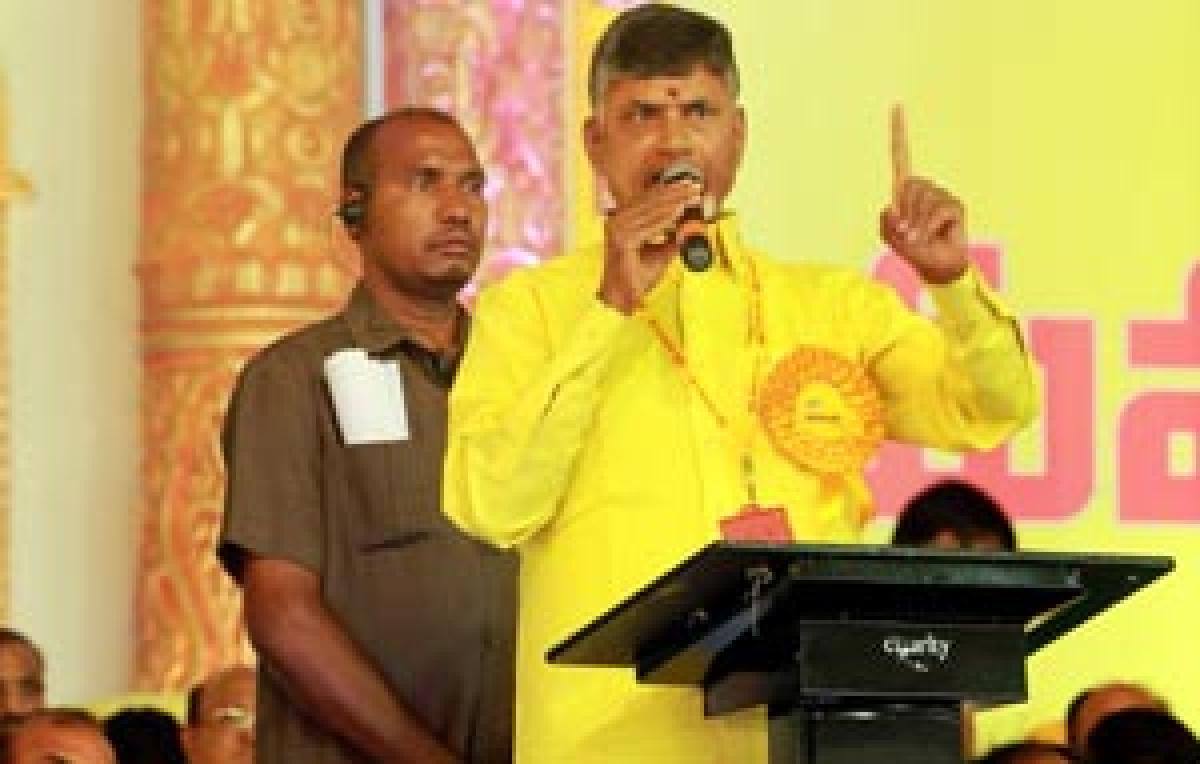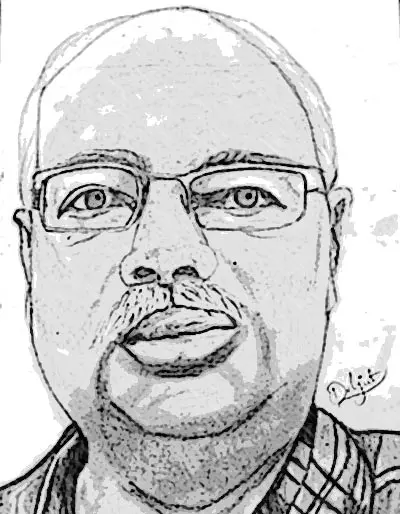Live
- France's TotalEnergies halts new investment in Adani Group
- Oppn stalls Parl over Adani issue, Manipur
- Sharmila demands scrapping of agreements with Adani firm
- 75 Yrs Of Constitution: President Murmu to address joint sitting of both Houses
- Are strict laws needed to ensure MLAs attend Assembly sessions?
- Centre leveraging innovation, tech for capacity building among teachers
- Oppn members seek more time for JPC on Waqf Bill
- Grievances flood Lokesh’s Praja Darbar
- PM underscores need to link co-op movement with circular economy
- Why Rake Up The Issue After 44 Years? SC upholds ‘secular, socialist’ in Preamble
Just In

Party leaders who tried to find out what exactly the story was say that historians have told them that the founder of the Satavahana dynasty was a king named Simuka who conquered a large territory in southern India and established his authority as a successful ruler. In the North, he extended his power as far as Vidisha. But he could not advance towards Magadha even though the ruling Kanva dynasty
The buzz word these days in Andhra Pradesh and even at the just concluded Mahanadu was ‘Gautamiputra Satakarni.’ This word had gained importance for two reasons; one because this would be 100th film of Nandamuri Balakrishna and more so because the people are expecting that there would be some fusion between the historical story of the downfall of the vast Mauryan Empire and the manner in which the Satavahana power once again rose into eminence in the South with bifurcation of Andhra Pradesh and the way TDP wants to build the residuary state.
Sources say that the movie would show how Kalinga Desa as it was known at that time saw the rise of the Chedi Mahameghavahana Dynasty and how South India saw the rise of the Satavahana Dynasty in its Andhra region.
The TDP leaders say that the party president asked Balakrishna to move a resolution on NTRs birthday knowing full well that the actor turned politician would refer to the movie and taking that as an advantage Naidu even thanked Balakrishna for taking the movie and made a reference to how Satakarni lost power to a major military aggression and how his son Goutami Putra Satakarni once again rose to eminence in the South and he also referred as to why he chose Amravati as the capital of the residuary state.
Party leaders who tried to find out what exactly the story was say that historians have told them that the founder of the Satavahana dynasty was a king named Simuka who conquered a large territory in southern India and established his authority as a successful ruler. In the North, he extended his power as far as Vidisha. But he could not advance towards Magadha even though the ruling Kanva dynasty in Pataliputra was on its path towards decline and fall.
After the death of Simuka, the next king of the dynasty named Krishna ruled over the Satavahana kingdom for eighteen Years. After him, Sri Satakarni came to the throne. He was a powerful king. He tried to conquer new territories in the Deccan and succeeded in his attempts. It is for his new conquests that his queen Nayanika described her husband in the Nanaghat inscription as the ‘Dakshinapatha-Pati’ or the Lord of southern India. Sri Satakarni ruled over many parts of the Godavari Valley and the northern regions of the Deccan. After conquering some territories of the Magadhan kingdom and extensive areas of western India, Sri Satakarni proclaimed his royal glory by performing both ‘Rajasuya’ and ‘Ashwamedha’ yagnas.
But, to the misfortune of King Sri Satakarni, when he was trying to become the paramount lord of the South, the Kalinga Emperor Mahameghavahana Aira Kharavela led his aggressive military expeditions towards the South to conquer new territories for the Kalinga empire. As a result, war broke out between the armies of the Kalinga Mahameghavahana dynasty and the Andhra Satavahana dynasty. In that struggle for supremacy, it was the Kalinga power which won victory after victory. Kharavela annexed a large part of the Satavahana territory to his Kalinga Empire.
By the time King Satakarni died, his sons were minor in age. The wife of the dead king, Queen Nayanika, therefore, looked after the administration of the kingdom. But, it was difficult for her to save the kingdom from decline. By the 1st century A.D., the foreign invaders named Sakas invaded the Satavahana kingdom again and again and took possession of the north-western regions.
Yet, the Satavahana dynasty did not disappear from the history of the Deccan like the Sungas and the Kanvas of Magadha in the north. The dynasty continued to rule over the Andhra region even if the size of the territory was reduced.
It was during the first half of the 2nd century A.D. that the Satavahana power once again rose to eminence in the south. The man of destiny this time was a king named Gautamiputra Satakarni. By his achievements as a conqueror and as an able administrator he raised the prestige of the Satavahana dynasty to new heights and came to be regarded as its greatest monarch.
Gautamiputra first increased the size of his army and made it a strong fighting force. Next, he led expeditions against the foreign Saka rulers and drove them out of the Maharashtra region. After liberating that area, he fought against the Yavanas and the Pahlavas and conquered their territories in the west. Like Emperor Kharavela of Kalinga, Gautamiputra Satakarni recorded his victory over others.
It is known from his inscriptions that the empire of Gautamiputra Satakarni included such territories as Asmaka in the Godavari basin, Suratha or modern Kathiawad, Aparanta or northern Konkan, the land of Anupa on the bank of river Narmada, Vidarbha or modern Berar, Akara or eastern Malwa, and Avanti or western Malwa. It is thus estimated that the territory of Gautamiputra extended from Kathiawad in the north to the river Krishna in the south, and from Konkan in the west to Berar in the east.
Though Gautamiputra established his power over a vast territory, yet it proved difficult for him to consolidate his rule over the lands to the north of the Vindhyas. The conquered areas beyond the Vindhya Mountains could not be held for long because of the foreign invasions. During the life time of Gautamiputra, a foreign race called the Scythians conquered the land of Malwa. Other conquered regions on the northern side of the Vindhya ranges also became independent of the Satavahana power.
But it is said that he was a benevolent king who looked after the welfare of his subjects. He took several steps to benefit the peasant population and to improve the condition of agriculture. He was also a ruler of humanitarian attitude to help the poor and the needy. On the whole, during his liberal monarchy, the subjects lived in peace and enjoyed prosperity.
Gautamiputra, historians say is described in his inscriptions as the destroyer of the Sakas, Pahlavas and Yavanas. He was also mentioned as the ‘Lord of the western Vindhyas’. Proud of his power, he styled himself as the ‘Raja-Raja’ or the ‘King of Kings’, and as the ‘Maharaja’. After a long reign, he died in 104 A.D.
According to some historians it is difficult to establish whether Satakarni started his rule from Telangana and spread towards Andhra because those days there was nothing like Andhra and Telangana. But still the popular belief is that his empire in this part of Vindhyas starts from Telangana and then he moved towards Andhra region.
In the backdrop of this situation, the TDP leaders feel that towards the end of the movie the glory and importance of Amravati would also be brought in but how the producers will do it, is still a big suspense.

© 2024 Hyderabad Media House Limited/The Hans India. All rights reserved. Powered by hocalwire.com







